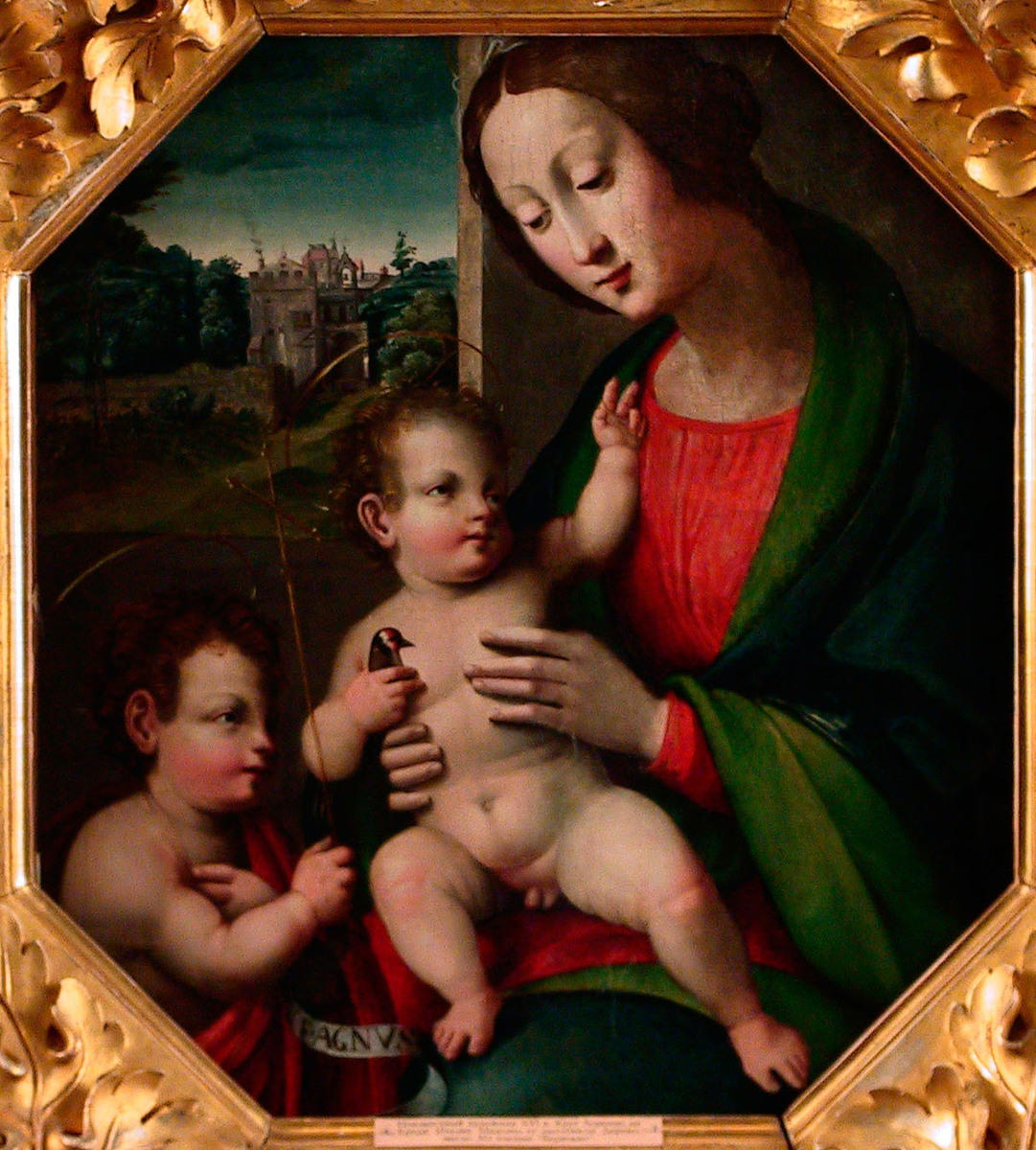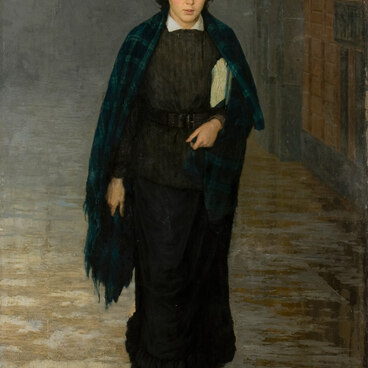In 1919, among the works of Western European art moved from the collection of the princes Gorchakov housed in the estate of Baryatino, Tarussky district, Kaluga Governorate, there was also the canvas “Madonna of the Goldfinch”. It was first attributed to an artist from Raphael’s school.
It was clear that the painting was not created by the great master himself, but the connection with his era seemed very likely. In general, it was difficult to determine the history of the painting, since later the landscape visible through the window and Madonna’s clothes were repainted; they were apparently in poor condition by the time the painting was sold. Meanwhile, the face of Madonna, as well as the figures of Christ and John the Baptist, were painted by the original artist and represent his authentic style, distinguished by elements characteristic of Italian Renaissance painting. The composition is constructed flawlessly; it is typical of the one widely used in the 16th century.
The work, as well as the original inspiration, was created in the period when icon painting in the West was already set aside and secular canvases inspired by religious plots, close in their interpretation to genre paintings, were becoming quite popular. Hence, the artist did not follow iconographic principles in the characters’ depiction or in their gestures that reveal an element of play.
Madonna’s face and the figures of the babies are carefully modeled with light and shadows. Apparently, the initial overall color palette was quite soft. The features of the painting resemble those in the works of Lorenzo di Credi, an Italian painter of the Florentine school. He studied under Andrea del Verrocchio and worked in his studio until Verrocchio’s death in 1488. Lorenzo di Credi worked in Pistoia and Florence. His style was formed under the influence of Leonardo da Vinci. In the work of Lorenzo di Credi, similar sitters can be found. If the inspiration for the presented painting is quite clear, it is more difficult to determine the identity of the artist. Most likely, he was an Italian who worked in the Netherlands, as it was painted on an oak board. A similar composition is also known in Italo-Greek painting (for example, in Angelos Pitzamanos’ art), however, in a somewhat simplified version.
It was clear that the painting was not created by the great master himself, but the connection with his era seemed very likely. In general, it was difficult to determine the history of the painting, since later the landscape visible through the window and Madonna’s clothes were repainted; they were apparently in poor condition by the time the painting was sold. Meanwhile, the face of Madonna, as well as the figures of Christ and John the Baptist, were painted by the original artist and represent his authentic style, distinguished by elements characteristic of Italian Renaissance painting. The composition is constructed flawlessly; it is typical of the one widely used in the 16th century.
The work, as well as the original inspiration, was created in the period when icon painting in the West was already set aside and secular canvases inspired by religious plots, close in their interpretation to genre paintings, were becoming quite popular. Hence, the artist did not follow iconographic principles in the characters’ depiction or in their gestures that reveal an element of play.
Madonna’s face and the figures of the babies are carefully modeled with light and shadows. Apparently, the initial overall color palette was quite soft. The features of the painting resemble those in the works of Lorenzo di Credi, an Italian painter of the Florentine school. He studied under Andrea del Verrocchio and worked in his studio until Verrocchio’s death in 1488. Lorenzo di Credi worked in Pistoia and Florence. His style was formed under the influence of Leonardo da Vinci. In the work of Lorenzo di Credi, similar sitters can be found. If the inspiration for the presented painting is quite clear, it is more difficult to determine the identity of the artist. Most likely, he was an Italian who worked in the Netherlands, as it was painted on an oak board. A similar composition is also known in Italo-Greek painting (for example, in Angelos Pitzamanos’ art), however, in a somewhat simplified version.



